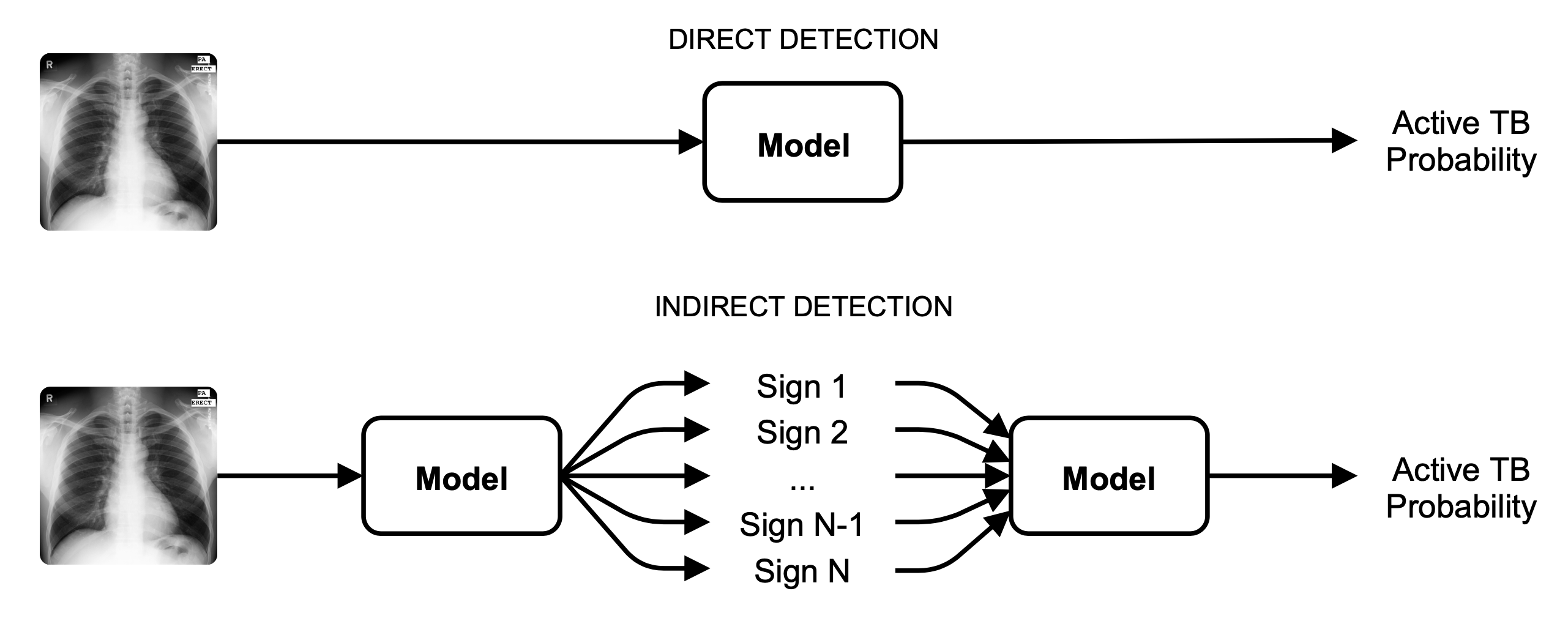Usage¶
This package supports a fully reproducible research experimentation cycle for tuberculosis detection with support for the following activities.

Direct detection¶
Training: Images are fed to a Convolutional Neural Network (CNN), that is trained to detect the presence of tuberculosis automatically, via error back propagation. The objective of this phase is to produce a CNN model.
Inference (prediction): The CNN is used to generate TB predictions.
Evaluation: Predications are used to evaluate CNN performance against provided annotations, and to generate measure files and score tables. Optimal thresholds are also calculated.
Comparison: Use predictions results to compare performance of multiple systems.
Indirect detection¶
Training (step 1): Images are fed to a Convolutional Neural Network (CNN), that is trained to detect the presence of radiological signs automatically, via error back propagation. The objective of this phase is to produce a CNN model.
Inference (prediction): The CNN is used to generate radiological signs predictions.
Conversion of the radiological signs predictions into a new dataset.
Training (step 2): Radiological signs are fed to a shallow network, that is trained to detect the presence of tuberculosis automatically, via error back propagation. The objective of this phase is to produce a shallow model.
Inference (prediction): The shallow model is used to generate TB predictions.
Evaluation: Predications are used to evaluate CNN performance against provided annotations, and to generate measure files and score tables.
Comparison: Use predictions results to compare performance of multiple systems.
We provide command-line interfaces (CLI) that implement each of the phases above. This interface is configurable using Bob’s extensible configuration framework. In essence, each command-line option may be provided as a variable with the same name in a Python file. Each file may combine any number of variables that are pertinent to an application.
Tip
For reproducibility, we recommend you stick to configuration files when
parameterizing our CLI. Notice some of the options in the CLI interface
(e.g. --dataset) cannot be passed via the actual command-line as it
may require complex Python types that cannot be synthetized in a single
input parameter.
We provide a number of preset configuration files that can be used in one or more of the activities described in this section. Our command-line framework allows you to refer to these preset configuration files using special names (a.k.a. “resources”), that procure and load these for you automatically.